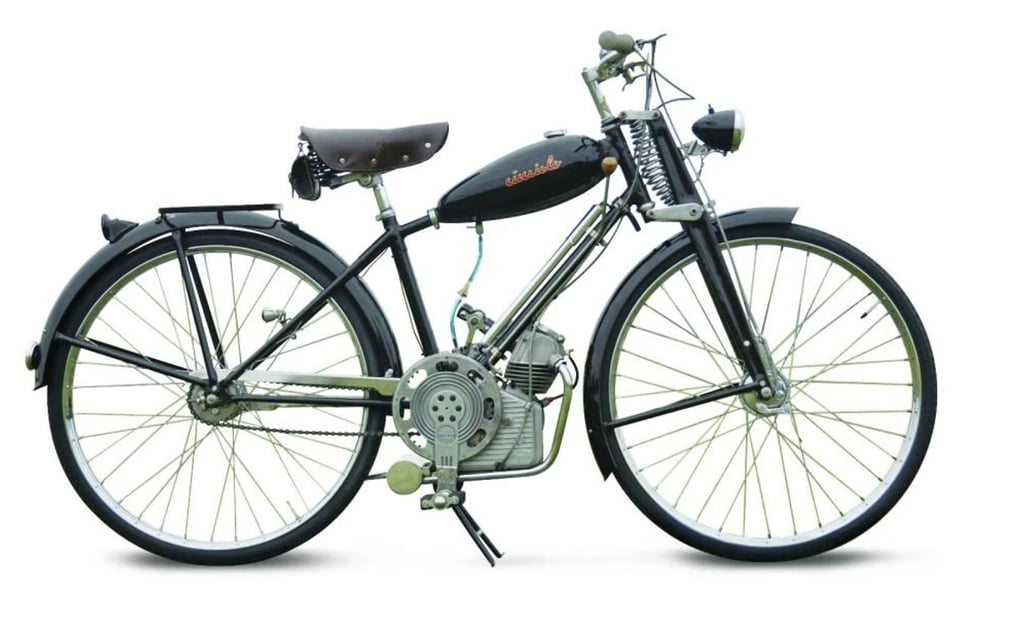Ducati: Iconic Journey from Cucciolo Moped to MotoGP Dominance
This article traces the innovative journey of Ducati, an Italian motorbike manufacturer. It highlights the transformation from their post-war sensation, the Ducati Cucciolo, to becoming a dominant player in the MotoGP championships with their unique Desmodromic engines. The profound impact of racer Casey Stoner and the comprehensive rule changes in the MotoGP series are highlighted. The article concludes by exploring Ducati's strategic steps towards future sustainability with its venture into electric mobility.
MOPEDSVINTAGE MOPEDSFOUR STROKE1950'SITALY DUCATICYCLEMOTORS
10/30/20232 min read


Ducati: From Foundation to the Electric Era
Founded in 1926 in Bologna, Italy, by Adriano, Marcello, and Bruno Ducati, the company initially functioned as a radio and electronics manufacturer. The focus, however, shifted towards motorized bicycles and subsequently, motorcycles. As history unfolded, the company experienced many turnovers, innovations, and successes in motorcycle production and racing.
During the immediate post-World War II era, Ducati made its mark with the iconic Ducati Cucciolo, the post-war sensation. Its conception goes back to a Turin lawyer, Aldo Farinelli, in collaboration with a self-taught engineer, Aldo Leoni. Their intention was to create a small engine that could be mounted on a bicycle. Finally, their first prototype hit the streets of Turin in Autumn 1944. Cucciolo or 'Little Puppy', as it was affectionately called, captured the public's attention with its loud 'yapping' sound from its short stubby exhaust. The engine was impressively light, weighing just over 17 pounds (7.7 kg), offering an excellent fue-efficiency placing it as a practical choice for transportation.
The Ducati Cucciolo was a 4-stroke clip-on engine for motorized bicycles, representing an extraordinary piece of engineering. It played a significant role in getting Italy back on the road, providing an economical and efficient mode of transportation. The Cucciolo had a significant impact on post-war Europe, with businessmen buying the engine units in quantities and offering complete units for sale, propelling its popularity.
Adding to Ducati's innovative spirit and determination for success was its entry into the MotoGP circuit in 2003. A year after the inception of the four-stroke series, Ducati was ready to test the waters with its Desmodromic engine, a unique configuration of engine design aligned with its signature brand identity. Despite having lesser resources than the dominating Japanese factories, Ducati made an immediate impression.
This experiential journey in MotoGP and the evolving design changes of its motorcycles made Ducati one of the only three firms to have championship titles since the start of the series, joining the ranks of Honda and Yamaha. The pinnacle of its success was exemplified when renowned Australian racer, Casey Stoner, rode the Ducati to victory.
Casey Stoner, with his exceptional talent, took Ducati to new heights in competitive racing. Possessing a unique ability to ride any motorcycle beyond its perceived limits, Stoner's relationship with Ducati brought significant victories that defined a golden era in Ducati's racing history. During his active years from 2007 to 2010 with Ducati, Stoner, with his characteristic resilience and unparalleled racing acumen, etched Ducati's name in the annals of MotoGP.
Stoner's remarkable run coincided with the critical rule change in MotoGP that facilitated the phasing out of the 500cc two-strokes. This change paved the way for four-stroke engines, and Ducati, with its mastery and innovation in this domain, managed to seize this opportunity effectively. Smoothing the way for Ducati's domination in the circuit was its unconventional yet proficient engineering that set the brand apart, turning every challenge into an opportunity.
As the future of motorized transport aligns itself with greener alternatives, Ducati is reinforcing its legacy. The Super Soco CUx Ducati Edition, with its major features and the Ducati signature style, represents Ducati's venture into electric mobility. This move unites their admirable past, the thriving present, and an increasingly green future.
